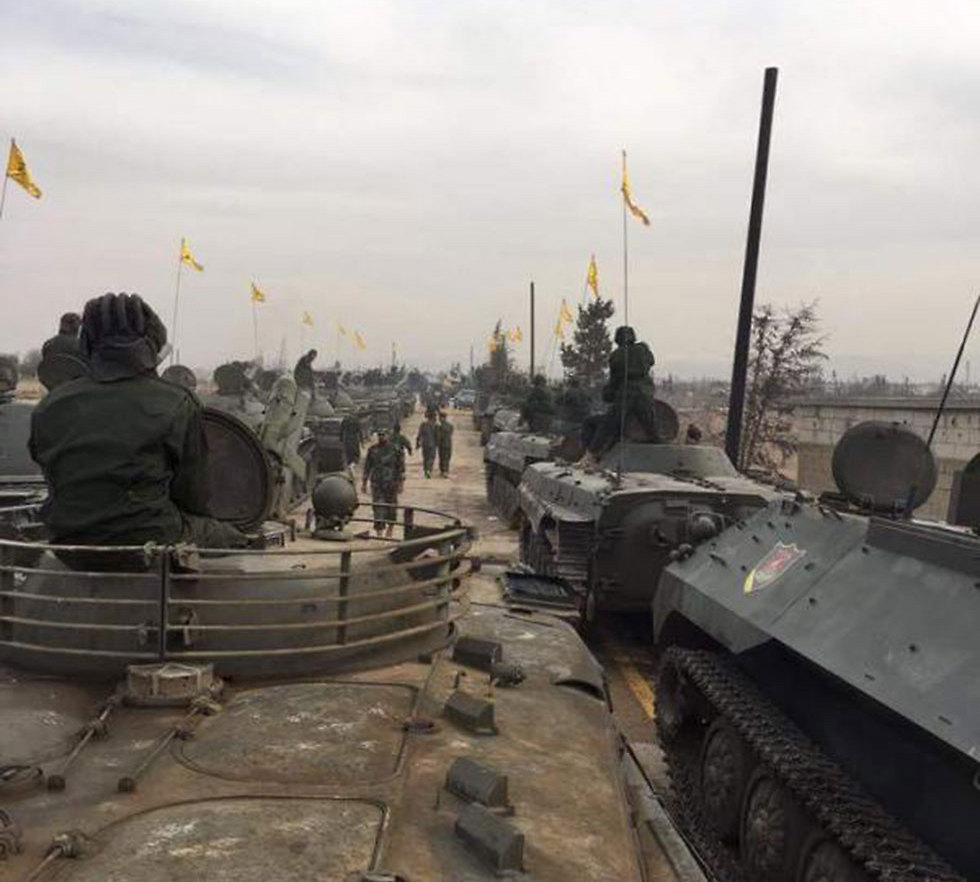
Expanding the ‘Hezbollah model’
Analysis: The bleeding Middle East and the intensive occupation with ISIS have distracted the world’s attention from Iran’s deployment in the entire region, as it seeks to create a territorial sequence from Iraq through northern Syria to Latakia, on the shores of the Mediterranean Sea.
The bleeding Middle East and the intensive preoccupation with the Islamic State have distracted the world’s attention from the Iranians, which are deploying in the entire region with malicious sophistication, seeking to create a territorial sequence from Iraq through northern Syria to Latakia, on the shores of the Mediterranean Sea. A perfect export of a revolution in relative silence, orchestrated by the Revolutionary Guards.
The Iranian leadership successfully read the change in the rules of the game in the regional system, and acted accordingly. The American hesitation over the Syrian issue in 2013, and the decision not to use a military option there, were seen by Iran as a proper opportunity to launch a diplomatic move and aim for an agreement that would get the country out of its diplomatic-economic isolation within a relatively short time. As it turned into “the lesser of two evils” upon the emergence of ISIS, Iran was positioned as a sought-after player in the regional and international circles, without providing a real promise to withdraw from its military nuclear aspirations.
The details of the agreement can be debated, but it’s important to remember that it will be tested by its implementation rather than by the direct meaning of its clauses. It’s safe to assume that parts of it were worded vaguely so as to leave the parties room for interpretation, and that will be a source of future disputes and will make it difficult for statements such as “Iran’s path to a nuclear weapon has been closed” or “the deal is not based on trust but on supervision” to stand the test of time.
If those who support the agreement hoped that the deal and its economic fruit would be enough to set in motion deep processes that would wear out the Iranian regime’s power in the coming decade or later on, in the short run the agreement has become an “insurance policy” for the regime. The ruling elite has grown stronger politically. While it has directed some of its new resources to public welfare, it has continued to oppress and crush human rights. Western claims against the tyranny of the “Republic” have diminished accordingly, as the agreement legitimized Iran as regular player in the community of nations.
The agreement provided a future guarantee for the status of the religious clerics controlling Iran alongside the Revolutionary Guards commanders. They have already reached the conclusion that turning Iran into a nuclear threshold state will guarantee the regime’s security and survival, after it has been proved that countries like Libya and Syria are trampled when their leaders are forced to give up the nuclear infrastructure they began to build.
In addition, the agreement has intensified Iran’s standing from the regional geopolitical aspect. With improved economic assets and broad international legitimacy, Iran continues to support the “clients” accepting its authority—Syrian President Bashar Assad, Hezbollah, the Houthis in Yemen, and more—and inflame conflict in the region. The arrival of thousands of Revolutionary Guard fighters in Syria, for example, created a new reality in strategic terms. The Iranians allegedly arrived to secure Assad’s survival, but were actually aspiring to establish a presence in the eastern Mediterranean Basin.
The reports in Kuwaiti daily al-Jarida about the Iranian initiative to build a missile manufacturing facility for Hezbollah on Lebanese soil, as well as the Iranian effort to create a navy port in Latakia, Syria, join the construction of Iranian infrastructure aimed at reinforcing Tehran and deepening its hold on the eastern coast of the Mediterranean Sea.
In general, Iran’s naval activity, on the shores of Yemen and in the Bab-el-Mandeb or Mandeb Strait as well, reveal that it is has a considerable interest in establishing home ports outside its borders. The bottom line is that Iran is here to stay, and despite the warnings—it’s all business as usual.
Prof. Uzi Rabi is the director of the Moshe Dayan Center for Middle Eastern Studies at Tel Aviv University.
(Translated and edited by Sandy Livak-Furmanski)











